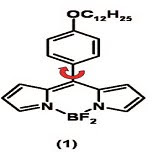Anant Marahatta
Tohoku University
Sendai, Japan
One of the major consequences made by the giant tsunami after the scary earthquake occurred on March 11, 2011 is on the Fukushima based nuclear power plants of Japan and damaged the reactors very badly. Immediately after this, the world is forced to think about the nuclear energy consumption in the form of electric energy. Japan has already decided not to depend on nuclear energy but how? Several arguments are being raised.
The Japan government said, "We have a power shortage this year and we are calling for a 15 percent cut in electrical usage." Office buildings are being told to set their thermostats to 82 degrees Fahrenheit. Everywhere, escalators and elevators have been shut down. No Microwaves, ACs, Toasters etc. are allowed to run in the universities, food chain stores, supermarkets, department stores etc. Tohoku University, one of the nation’s high tech university, is asked to minimize the electricity usage as possible as it can. Even though all the lighting systems are set to control automatically, the university has even removed several tubes and fluorescent lamps. All the laboratories are asked to turn on the light after 5 pm if possible. Cafeteria helps this campaign even not tuning TV set.

The Environment Ministry advised workers to use gel sheets or eat foods that cool the body. It also suggested that employees limit overtime hours, work from home and take two weeks of vacation. Since, Japanese are very much hard working peoples and they usually bring lunch packs prepared by them and supposed to use the microwaves present at their offices. But due to the energy crisis, several Japanese are forced to eat without heating. The matter is also concerned about their health.
This sort of campaign is not only for the summer but is going to be a big event to change the way of life in Japan and people's lifestyles. The push to save energy in Japan comes from this Nuclear energy crisis.
How long will Japan be suffered by this crisis?

















